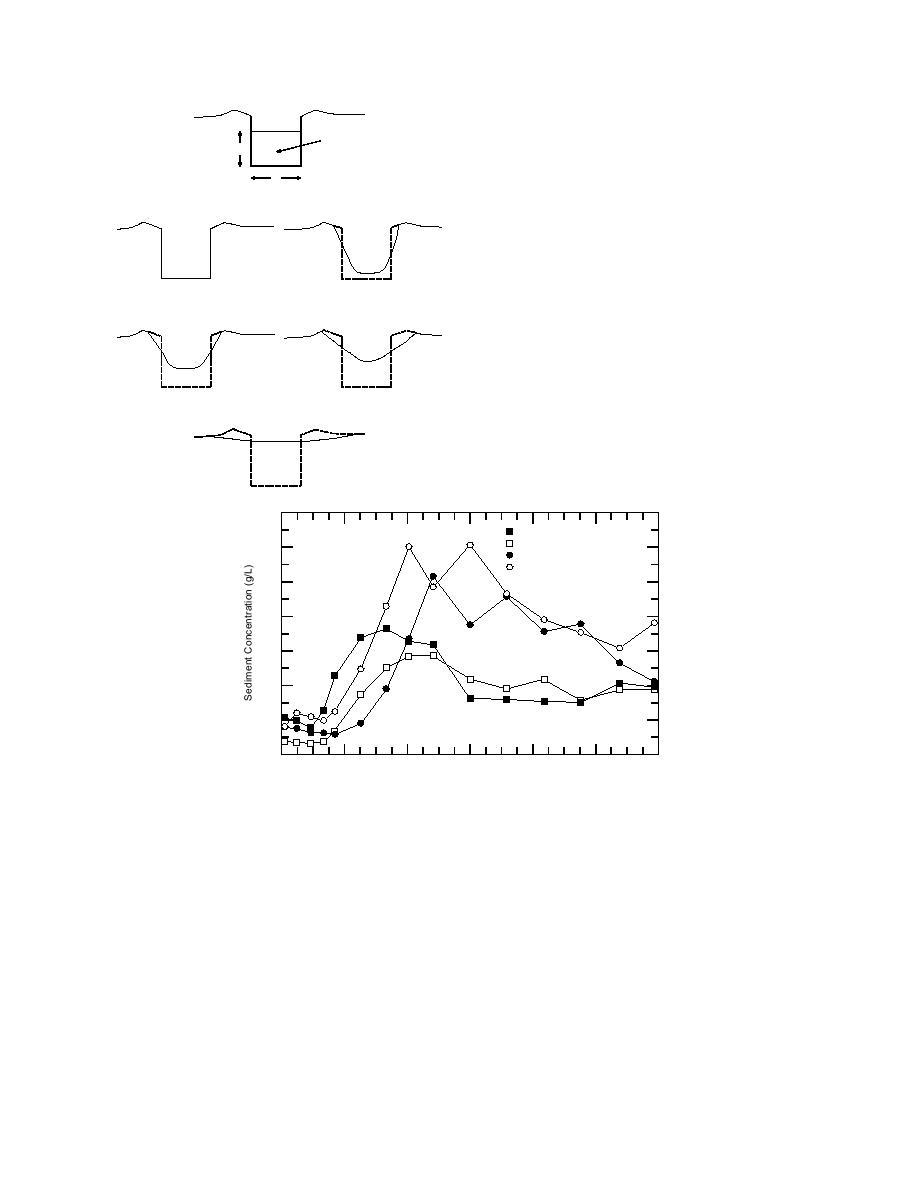
R = A/P
= wd/w+2d
d
w
1
2
3
4
Figure 6. Hypothetical changes in rill hydraulic geometry
because of FT-induced soil failures; as thawed soil along rill
side slopes collapses, the rill cross-sectional depth (d)
decreases and width (w) increases, and the character of the
5
rill flow becomes more like that of less-erosive overland flow.
This evolution assumes no intermittent flow to clean out the rill
channel.
3.5
Bulk Density 1.28 (Mg/m3)
Bulk Density 1.36 (Mg/m3)
3.0
Bulk Density 1.44 (Mg/m3)
Bulk Density 1.52 (Mg/m3)
2.5
2.0
1.5
1.0
0.5
0.0
0
300
50
100
150
200
250
Time (s)
Figure 7. Sediment concentrations in runoff over variably compacted
soil was higher in denser soil because the surface roughness of and the
infiltration into the more compacted soil was less, resulting in high,
near-bed water velocities and more bed soil-particle detachment and
transport. (After Parker et al. 1995.)
transport and hillslope erosion. In some loca-
from sediment infilling processes and sediment
tions, frost-induced soil creep is more effective at
clearing and channel cutting by rill flows (Kirkby
moving surface soils downslope than is summer
1980, Piest et al. 1975). Owoputi and Stolte (1995)
creep and can obliterate natural rills over one
state that further study of the characteristics of
winter (Schumm and Lusby 1963; Schumm 1956,
rills is necessary for an improved prediction of
1964, 1967; Carson and Kirkby 1972). Such rills
the soil erosion process.
become clogged with sediment and the initial
I hypothesize that the cross-sectional shape of
runoff in the spring often becomes sediment
a rill would become broader and shallower after
laden as it clears out infilled rills (Schumm and
FT-induced failures along the rill side slopes and
Lusby 1963). Thus, rill enlargement often results
no intermittent flows (Fig. 6). As a rill's depth
6



 Previous Page
Previous Page
